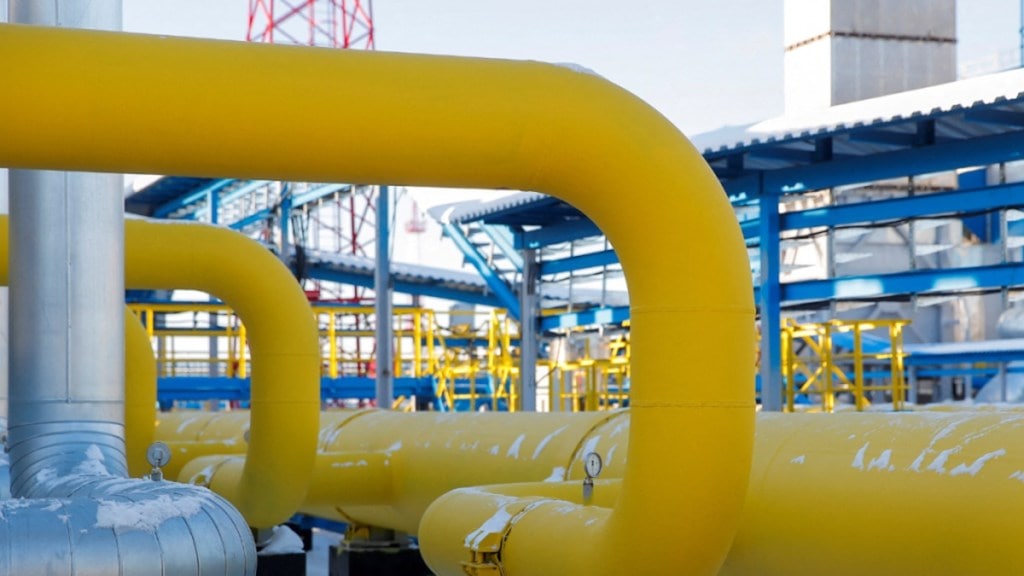The Petroleum and Natural Gas Regulatory Board (PNGRB) on Friday simplified the pipeline tariff structure, a move which will reduce transportation costs of city gas distribution (CGD) companies, and potentially improve their margins.
Following the development, the prices of Indraprastha Gas (IGL) and Mahanagar Gas (MGL) shares rose on Friday. The IGL stock closed at Rs 226.25 apiece on Friday, up 3.22% from its previous close. MGL’s share closed at Rs 1,542.20, up 2.27% from its previous close.
The regulator amended the Natural Gas Pipeline Tariff Regulations 2025, to reduce the number of Unified Tariff Zones from three to two. The amendments seek to simplify tariffs and market structure, promote cleaner fuels, and build an inclusive gas-based economy, the PNGRB said.
The regulator also called it a consumer-centric move, as the benefit of the Unified Zonal Tariff of Zone 1 has been extended nationwide to Compressed Natural Gas (CNG) and Piped Natural Gas (PNG) domestic segments. “This is poised to make natural gas more affordable for urban households and transport networks, thereby supporting broader clean energy adoption,” the regulator said.
“The move will help streamline gas consumption as end-point prices are a combination of landed gas produced and then pipeline transportation, so this unified pipeline tariff will help simplify it,” said Manas Majumdar, Partner and Leader Oil & Gas – PwC India. “Earlier all tariff was by pipelines and then simplified into 3-zone tariff which is now kept to 2-zone, and the tariff increased from zone 1 to zone 2, so with CGD (city gas distribution) companies having postal tariff of zone 1, they get benefit of lower transportation tariff and hence will enhance their profitability,” he said.
The reforms were approved during a recent Board meeting following extensive consultations with stakeholders across the industry in line with the vision of “One Nation, One Grid, One Tariff”.
Furthermore, to stabilize tariffs and ensure efficiency in supply, PNGRB has mandated pipeline operators to procure at least 75% of their annual system-use gas through long-term contracts (minimum three-year tenure).
“This will lower procurement risks, reduce transaction costs, and ultimately result in more predictable and affordable tariffs for consumers and investors alike,” said the regulator.
Majumdar noted that simplification to 2 zones will benefit all end-consumers, especially remote areas like north-east which were in zone 3, and will now be in zone 2, so lower and simpler tariffs will be a key benefit.
To fund future expansion, PNGRB has also introduced a dedicated Pipeline Development Reserve, utilizing earnings from pipeline entities that exceed 75% utilization benchmarks. Notably, 50% of these net-of-tax earnings will be reinvested into infrastructure development, while the remaining 50% will be passed on to consumers through tariff adjustments—creating a performance-linked, self sustaining model for growth, it said.
“These reforms represent a strategic blend of regulatory innovation and stakeholder centric governance, ensuring that both consumers and industry players benefit equitably. By realigning tariff structures, incentivizing long-term planning, and reinvesting in infrastructure, PNGRB is laying a strong foundation for India’s cleaner, greener, and more inclusive energy future,” PNGRB said.
“The streamlined tariff set would mean that consumers would actually benefit, and costs are likely to decrease, and this is aimed at enhancing gas consumption and striving towards the goal of gas in energy mix to reach 15% by 2030,” Majumdar said.


